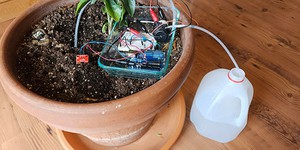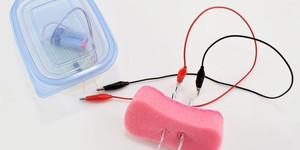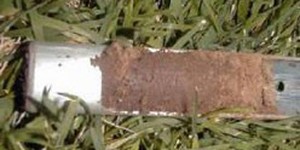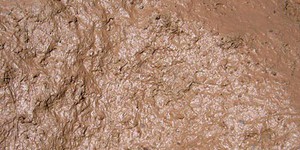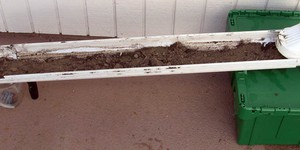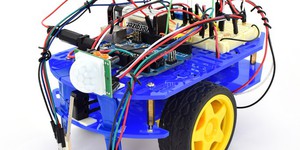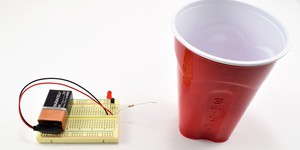Others Like “Monitor Your Plants with a Soil Moisture Sensor” (top 20 results)
|
Have you ever taken care of a plant? It can be tricky to get it right. You have to remember to water it regularly, and you also have to make sure to give it the right amount of water — not too much or too little. What if technology could help? In this engineering project, you will learn how to automate the entire process of watering a plant. Using a soil moisture sensor and a pump, you will build a circuit that will automatically detect when the soil is too dry, add water, and stop when…
Read more
Water is a valuable resource, and water shortages are a serious problem in many parts of the world. The problem can be made worse by people who waste water; for example, by watering a garden or using sprinklers on their lawn (or a farmer taking care of an entire field) when it has rained recently or the soil is already moist. How can you help conserve water and prevent such waste? One way is to build an electronic soil moisture sensor. This project will show you how to build a circuit that…
Read more
Divide a part of your garden into two equal plots, with each plot receiving equal amounts of sun. Cover one plot with two inches of organic mulch, such as compost or ground bark. Leave the other plot uncovered. Use the same amount of water for each plot for two or three weeks. At the beginning of the experiment, and at one-week intervals, dig down and check the soil in each plot for moisture content. Which plot holds water better? Which plot shows better plant growth? (McCausland, 2006)
Read more
Did you know that you can use more water on your lawn and garden in the summer than you use for all other purposes all year long? If you have an automated sprinkler system for your lawn and/or garden, this project could save money on your family's monthly water bill. You'll also be helping to conserve a precious natural resource: clean water.
Read more
Have you ever taken a step onto what appeared to be dry ground, only to find yourself ankle-deep in mud? Yuck! When you walk through damp soil, it can be a very messy experience. How can you tell if soil is wet or dry before you step on it? In this science project, you will investigate whether the color of the soil can help you determine how dry or wet it is.
Read more
When pesticides are applied to protect crops, run-off of potentially harmful pesticides is a major problem. Can water plants such as hardstem bulrush, common cattail, parrotfeather and smooth scouring rush promote pesticide breakdown? If so, diversion of irrigation run-off into plant-filled ponds could help reduce pesticide pollution. Mix malathion at 12.5% of the recommended application strength (to simulate dilution by rain or irrigation water). Use 5-gallon buckets for testing various…
Read more
Do you have any great-grandparents who lived through the Great Depression in the United States during the 1930's? If so, they might have stories to tell about terrible dust storms that blackened the skies, from the Midwest to the east coast. Severe drought was a factor in causing this "Dust Bowl" era, but decades of poor farming practices contributed to it, too. In this environmental science fair project, you'll learn about farming methods that help keep dirt from drying up into dust, and help…
Read more
The Science Buddies Bluebot Kit contains parts to build four different robots:
A motion-activated robot that uses a passive infrared (PIR) sensor
A light-tracking robot that uses photoresistors
A line-following robot that uses infrared emitter-detectors
An obstacle-avoiding robot that uses bump sensors
However, in each project, the sensors are hard-wired to control the robot's motors. This allows the robot to steer left and right based on input from two sensors, but it does not allow…
Read more
Wouldn't it be nice to avoid those nasty electric shocks you get after you have walked around on carpet and then touch a doorknob? These shocks are caused by static electricity. In this project, you will build a super-sensitive charge detector to investigate the electric fields created by static electricity. The detector can sense invisible electric fields before you touch something and get zapped, so try this project to avoid the shock of shocks!
Read more
What variables contribute to the properties of the soil in an area? Investigate the role of climate, weather, topography, time, parent material, vegetation, and biological and chemical agents on soil formation. How are soils characterized? There are 3 basic particle sizes which create three basic soil types: sand, silt, and clay. Investigate the properties of the three different types of soil by observing grain size, shape, hardness, color, chemical composition, pore space, aeration,…
Read more
|
Explore Our Science Videos
Design a Seeding Machine
How to Make Magnetic Slime
Make a Thermometer - STEM Activity


